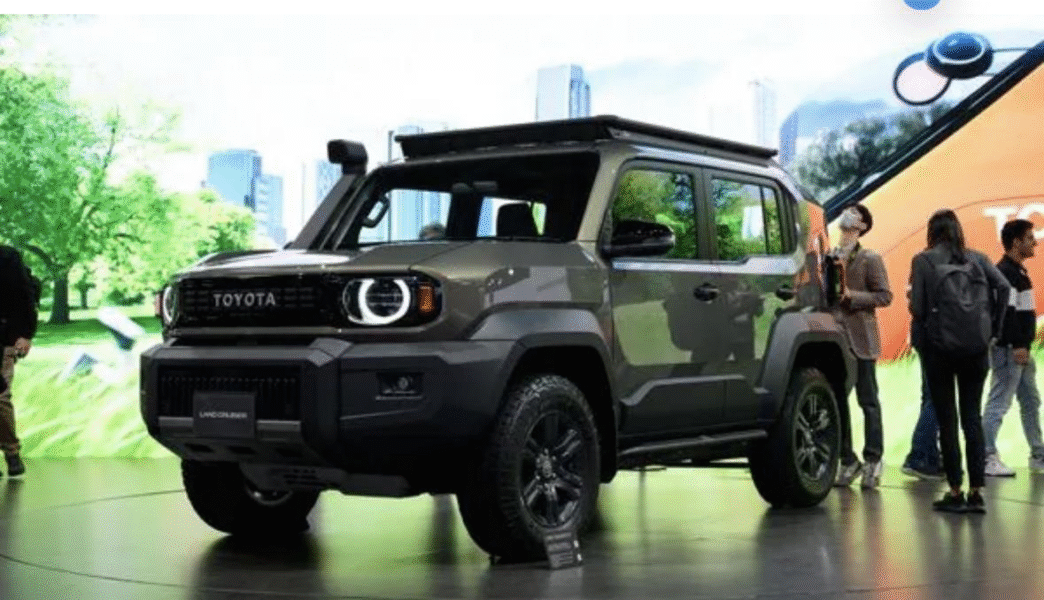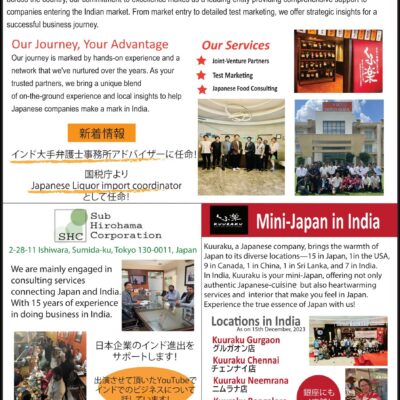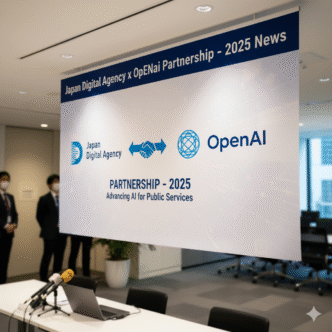The Japan Mobility Show 2025 (JMS 2025), held in Tokyo from October 30 to November 9, has sounded a major wake-up call for the Indian mobility sector. With more than 500 companies and organisations participating including automakers, electronics/e-tech firms, and startups this year’s theme emphasised the wide domain of “mobility” beyond just cars: land, sea, sky, infrastructure, energy, and connected systems. For India its fast-growing market, evolving regulation, and push toward cleaner/connected mobility JMS 2025 offers a glimpse of what the road ahead could look like. Below are key take-aways from the show, interpreted for how India’s roads, mobility ecosystem and transport policy might evolve.

1. Multi-modal & connected mobility: vehicles are no longer solo islands
At JMS 2025, exhibitors increasingly presented vehicles as part of a larger system: connected energy, vehicle–infrastructure reciprocity, devices beyond road use. For example:
- Denso Corporation’s exhibit highlighted an “EVECOM / SOEC / Battery Circularity” suite vehicles, charging/discharging, grid-linking and hydrogen production.
- The “Tokyo Future Tour 2035” area explored mobility on land, sea and sky: flying vehicles, modular formats, outdoor/off-grid life.
- Toyoda Gosei Co., Ltd. displayed innovations such as pop-up fenders, signage to alert pedestrians/cyclists and motorcycle-airbags: all emphasising integration of safety, connectivity and mode-diversity.
What this means for India:
- As Indian cities (Mumbai, Delhi, Bangalore etc.) face congestion and infrastructure pressure, mobility will shift from “vehicle buys” to “mobility systems”: EVs + charging + grid/infrastructure + shared/connected modes.
- New vehicle programmes should factor in network-effects for instance, how EVs link to municipal grids, how vehicles talk to infrastructure (V2X), how alternate modes (e-bikes, micro-mobility) connect with cars.
- The Indian policy/regulatory framework must evolve beyond emission norms to include system-safety, data connectivity, energy-grid integration, and shared mobility architecture.
2. Clean propulsion & flexible energy: not just EVs, but fuel options + smarter energy management
JMS 2025 emphasised that “electric” is not the only future there is fuel-diversity, easier energy transitions and smart charging/discharging. Highlights relevant to India:
- Suzuki Motor Corporation (via its Indian arm) showcased four “Made in India” models including:
- the Fronx Flex-Fuel variant, capable of up to E85 ethanol blends.
- the Victoris CBG variant (compressed biomethane gas) derived from organic waste.
- the e-Vitara EV built in Gujarat for global markets.
- Denso’s energy management exhibits pointed toward bidirectional charging (vehicle-to-grid), hydrogen production, circular-battery flows.
Implications for India:
- India’s policy push on ethanol-blending (E20/E85) and alternate fuels (CBG, bio-gas) aligns well with such flex-fuel innovations. The Suzuki flex-fuel example shows global OEMs believe in fuel-diversity rather than locking purely into BEVs.
- The EV ecosystem in India must concurrently address energy infrastructure, charging/discharging cycles, grid integration, battery recycling. The Denso example underlines that a car is part of an energy ecosystem not just a mobility piece.
- Manufacturers and suppliers in India should invest in modular/flexible platforms that can accommodate multiple propulsion systems (ICE, hybrid, BEV, flex-fuel) to adapt to policy/regulatory/market shifts.
3. Affordable & accessible electric mobility for emerging markets
One recurring theme at JMS 2025 was how mobility innovations are being designed for mass markets (not just luxury). For example:
- Honda’s “0 Series” of EVs (including the 0 Saloon and 0 SUV prototypes developed under the “Thin, Light, Wise” philosophy) aims at affordable premium EV segments.
- Suzuki’s “Vision e-Sky” BEV minicar concept (3.4 m length) aimed at everyday daily mobility.
Relevance to India’s roads:
- India’s large nascent EV market (~two-wheelers, three-wheelers, compact cars) means that cost-effective EVs will be important—not only flagship models.
- Local manufacturing (e.g., Gujarat, Tamil Nadu) must focus on volume, simplified platforms, scale economies. The “Made in India” models shown by Suzuki hint that manufacturers are gearing up for this.
- Infrastructure investment (charging stations, grid upgrades) must parallel vehicle roll-out; affordable EV models only succeed if charging and service ecosystem are present.
- Policies (subsidies, tax benefits, localisation) need to encourage not only BEV launch but manufacturing of affordable EVs, and conversion of existing ICE fleet to cleaner alternatives.
4. Safety, new-vehicle design & “mobility culture” that changes how roads are used
JMS 2025 covered not just the vehicle tech but also how mobility as culture changes: safety of all road users, multi-modal shifts, design for evolving lifestyles. Highlights:
- Toyoda Gosei’s pop-up fender and signage technologies reveal focus on pedestrian/cyclist safety.
- JMS Mobility Culture Program included “Advanced Safety Vehicle Test Drive on Public Roads” showcasing ASV (advanced driver-assist systems) by major manufacturers.
- “Future City Life” exhibits show how mobility integrates with urban planning, outdoor living, nature-connected mobility.
Why this matters for India:
- Indian roads face significant safety challenges: large numbers of accidents, pedestrians, mixed traffic. Technologies like pedestrian/cyclist alert systems, ASV, connected infrastructure can have high impact.
- As Indian cities densify, mobility culture will shift: more ride-hailing, shared mobility, e-two-wheelers, micro-mobility. Urban design needs to adapt (dedicated lanes, parking/charging hubs, pedestrian zones).
- The notion of mobility will expand beyond cars to devices (e-scooters, personal mobility devices), shared fleets, autonomous vehicles. Planning and regulation must anticipate these shifts.
5. India-Japan synergies: manufacturing, innovation, scale
One under-the-radar takeaway from JMS 2025 is how India and Japan share mutual opportunities in mobility: manufacturing, R&D, supply-chain collaboration, policy alignment. For instance:
- The “Made in India” models showcased by Suzuki at JMS underline that India is not just a market but a global manufacturing base.
- Japan’s advanced component/OEM ecosystem (exhibiting next-gen technologies) offers R&D and supplier opportunities for India’s ambitions.
- Indian policy (eg. on flex-fuel, ethanol, EV subsidies) aligns in part with the Japanese OEMs’ showcased innovations.
Strategic implication for India:
- Encourage joint R&D, joint-manufacturing ventures with Japanese firms focused on India-specific mobility challenges (tropical/high-temperature conditions, mixed traffic, cost sensitivity).
- Build supply-chains that link Indian component makers with Japanese OEM innovation hubs.
- Policy dialogues should integrate mobility-ecosystem thinking: energy, grid, manufacturing, infrastructure, export orientation.
6. Key lessons for Indian stakeholders
| Area | What to do | Why |
| Product strategy | Prioritise modular platforms, cost-effective EVs and flex-fuel hybrids | Because Indian market demands affordability and diverse propulsion |
| Infrastructure & ecosystem | Scale charging, grid-link, battery recycling, bidirectional flows | Vehicles alone don’t solve mobility: energy system must follow |
| Safety & mixed mobility | Adopt connected vehicle tech, pedestrian/cyclist protection, shared micro-mobility integration | India’s road safety and congestion issues demand systemic change |
| Urban planning & culture | Plan for multi-modal mobility hubs, re-think parking/charging/last-mile, support micro-mobility | Mobility is expanding beyond private cars |
| Skill & supply-chain linkages | Leverage Indian-Japan manufacturing/supplier tie-ups, R&D collaboration | Global sourcing and manufacturing scale will determine competitiveness |
| Policy & regulation | Create framework for flexible fuels, grid-vehicle symbiosis, connected/ autonomous systems | The regulatory frontier is shifting rapidly |
7. Challenges & caveats for India
While the show points to many exciting directions, India must navigate hurdles:
- Cost/affordability: many innovations are still concepts or premium models; bringing cost down will be essential.
- Infrastructure lag: charging, grid readiness, renewable energy, battery recycling plants need catch-up.
- Mixed traffic & legacy fleets: Adoption of advanced ADAS, connectivity will need sensors, network infrastructure and retro-fit strategies.
- Climate & geography: India’s high temperatures, dust, variable roads mean Japanese prototypes will need localisation/adaptation.
- Market readiness & consumer behaviour: Affordability, awareness, trust in new fuels/EVs, and service ecosystem will drive or delay uptake.
8. Conclusion: What the future looks like for Indian roads
The Japan Mobility Show 2025 has given a strong preview of a mobility future where:
- Vehicles are part of an energy-connectivity ecosystem, not mere transport.
- Multi-modal mobility (cars, e-two-wheelers, shared, flying/sea) becomes more integrated.
- Fuel-diversity matters: BEVs, flex-fuel, biomethane, hydrogen all have roles.
- Safety, urban planning, mobility culture become critical for how roads are used especially in India’s complex environment.
- India stands to benefit significantly from Japan-linked manufacturing, innovation and policy synergies but only if the local ecosystem (infrastructure, regulation, cost-structures) keeps pace.
For Indian policy makers, OEMs, component makers, urban planners and mobility start-ups, JMS 2025’s insights are a blueprint. The roads of India are not going to be just “more of the same.” They’ll be smarter, cleaner, connected and quite possibly fundamentally different.
Originally written by: Mainak Das

















